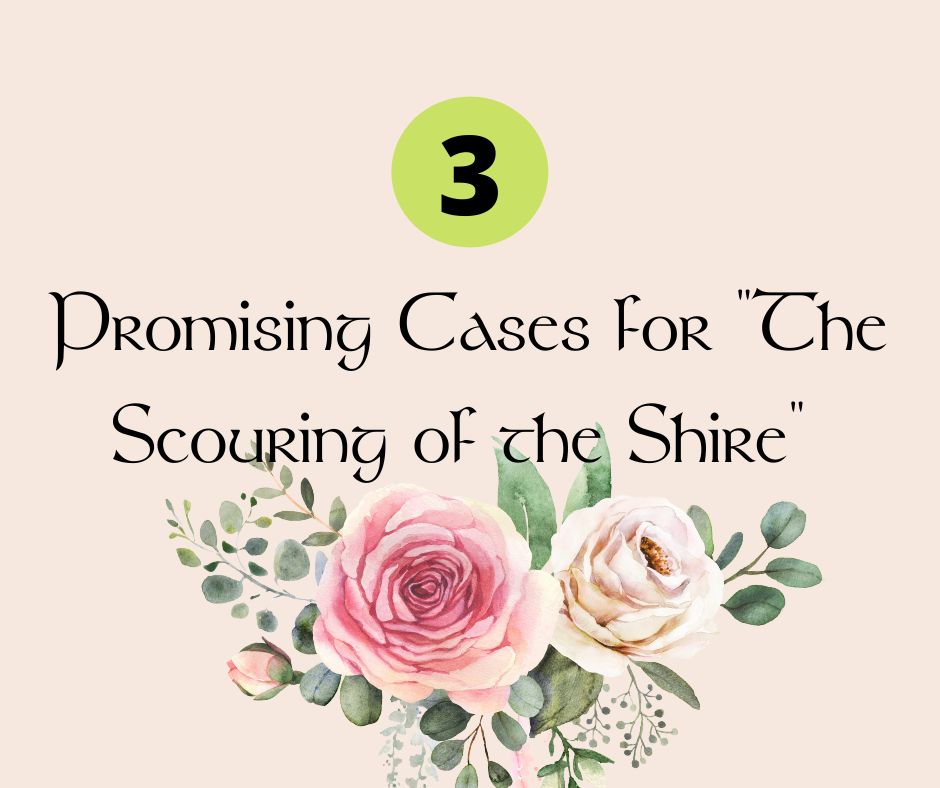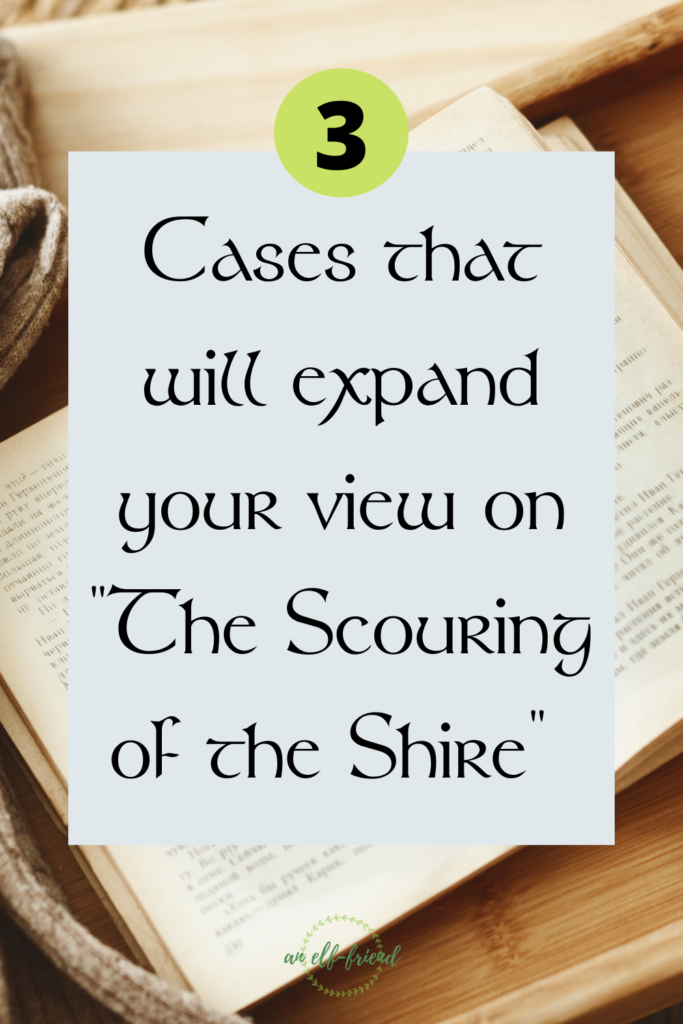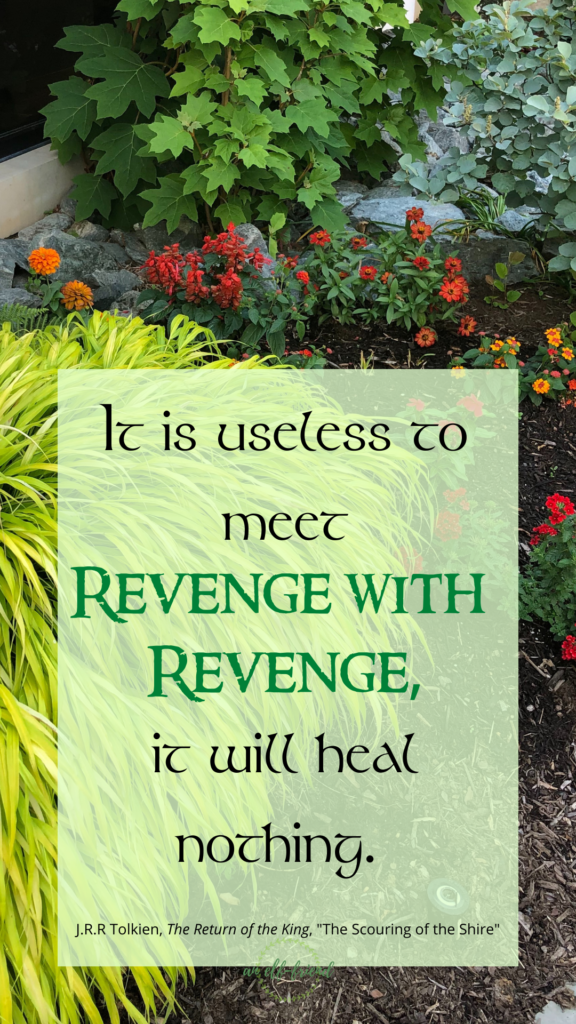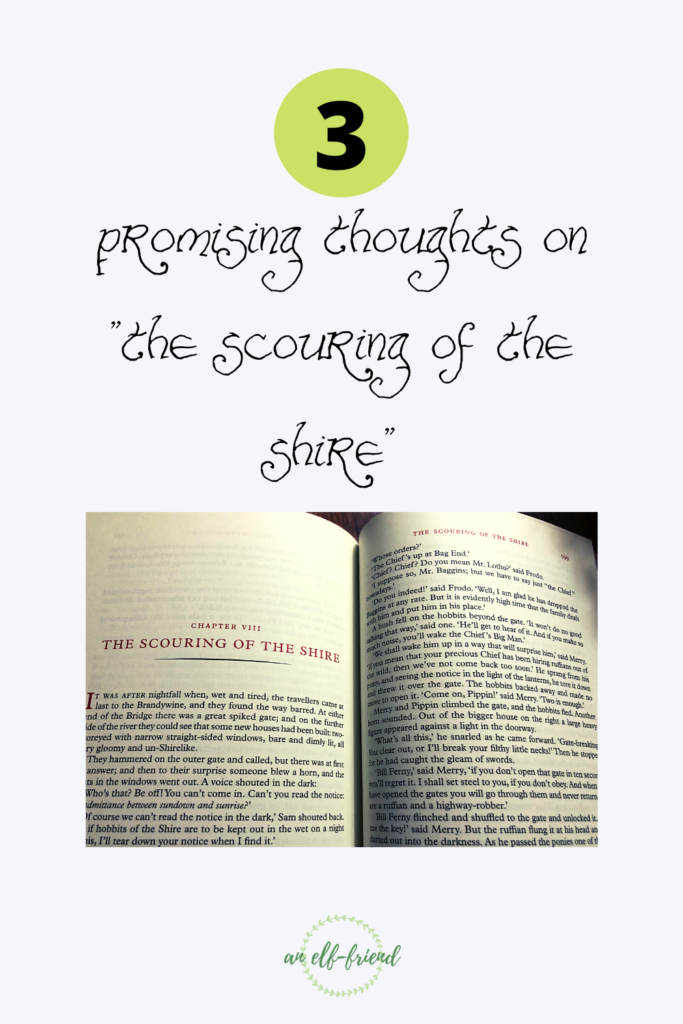
This week I want to talk about “The Scouring of the Shire,” a chapter that is very much discussed in theory. It was not in the movies, and there may be a good reason. I used to get fired up that it wasn’t, but maybe there were good reasons. After all, I’m not trying to bash the movies, as I think they did do a good job.
Table of Contents
Why wasn’t much of “The Scouring of the Shire” in the movies?
Now, when we’re looking at it sort of zoomed out, we see it mainly featuring the Bay of Bywater. So in Lord of the Rings, especially the films, the story arc is mainly focused on Frodo’s destruction of the Ring.
With all the endings that the Return of the King already had, it may seem anticlimactic to have another battle. A separate movie, perhaps, though it was probably omitted by the same reason that Tom Bombadil was: it would’ve made the movie longer and Jackson probably didn’t think it had much to do with the main idea of the Ring’s destruction.
However, while the case for the many endings makes sense, I think part of the reason why Return of the King was the longest movie in the series was because many of the scenes originally in The Two Towers got moved over.
But there was also a good reason for the omission of “The Scouring of the Shire,” as the entire story arc was about the destruction of the Ring, so in general, viewers probably didn’t want to have too many endings after the climax of the story.
Also, there were a lot of “hints” and aspects from “The Scouring of the Shire,” like Sauron being killed by Orthanc, or the foreshadowing of the Ring had it not been destroyed in Lothlorien, even if the entire chapter was not in the films.
While I sometimes wish some parts of “The Scouring of the Shire” was also added into the films, I’m not too concerned with its omission as it had good reasons for it.
It seems that the general consensus was that people liked “The Scouring of the Shire,” but didn’t see the point of it being in the movies. However, I wanted to look at it from another angle and see what it’s missing with its omission.

Synopsis
As the second to last (“penultimate”) chapter of the Return of the King, “The Scouring of the Shire” starts out with the four hobbits, having already reunited by this point for a while, going back to the Shire after their long journeys.
They were heading there when they found a cherished place very different than what they remembered when they left, and very gloomy as a result. And worst of all, they were shocked to see that they weren’t allowed to get into Brandywine on the way back, from sundown to sunrise – which they found out by a voice as they couldn’t see the notice in the dark.
The voice they heard was a “Chief,” whom Frodo suspects must be Lotho, and Merry and Pippin climbed the gate while the sound blared. They asked Bill Ferny to open the gate, and he did. Then Hob eventually comes in, and says that they weren’t allowed to be there, noting some of the things they did. After the argument, Merry and Pippin were tired of fighting with Hob and begged just to be able to have a room there.
They eventually went into the hobbit guard-house, which was bare and ugly, with a list of Rules in every wall (which was torn down by Pippin). They later found there wasn’t much of what they enjoyed, such as beer and food, but were able to manage until morning.
Then we see that the hobbits were discussing their plans, on whether they were to go to Crickhollow first or just to go back to Bag End, as it was a good forty miles from the Bridge back home. (Keep in mind that at the time of writing, and also in Middle-earth, there wasn’t a lot of means of transportation and they would plan to walk the whole way.)
They eventually decided on heading straight towards Hobbiton, and but eventually landed up in the Frogmorton village. There, they find that Frodo was arrested for all the things he did in Brandywine the other night. However, the hobbits eventually were led by the Shirrif-leader there to the far end of the village, as the inn was closed.
Since Sam knew Shirrif Robin Smallburrow, one whom he knew and trusted – who further explained the Shirrif-leader’s words, much to his dismay. He later finds that all the Shirrifs have an established community in the East Farthing Troop, where they learn all these new tiles.
The house was as torn as the house they had stayed in the previous night. But there, the hobbits also found out they had to get to Bywater.
Then, we see that they are being faced by Saruman, who was presented as the mysterious boss, “Sharkey.” There were also half-dozen Men who claimed to not answer to Lotho, who is the Hobbit Chief. The men threaten Frodo, though the other three hobbits were the one drawing swords.
Merry and Pippin wanted to start a fight in order to destroy him and were shocked when they heard that Frodo seemingly wanted to save Lotho instead.
Sam decides to find Tom Cotton, who then eventually started the fight along with Merry and Pippin. Eventually, Sam ran off with Frodo to meet the Cottons, while Merry decided to arrange lookouts and guards for the night. (The hobbits spent the night there.)
There, they find out about Lotho and his desire to sell property he had from the Southfarthing. The mayor tried to protest, but to no avail – he was locked, and Lotho (Pimple) called himself “Chief.”
The next morning, the hobbits found themselves in a battle with the ruffians, men and other hobbits, which was later known as the Battle of Bywater, 1419. 70 ruffians died, along with a dozen prisoners, 19 other hobbits were killed, while 30 were wounded. It was the only battle fought in the Shire and the only one in the Northfarthing since the Greenfields. They decide to run up to the Chief.
Sam said that it was worse than Mordor – while Frodo remarked, “yes, this is Mordor. Just one of its works.” Later, we find out who this “Sharkey” was – it was Saruman in disguise. He makes fun of the hobbits, almost just claiming they have it easy. Frodo asks him to leave, but the other hobbits in the villages tell Frodo to just dive in and kill Saruman.
Frodo refuses, claiming that he recognizes that Saruman’s lost all power, but he was fixed on this idea not to kill Saruman, instead sending him to exile.

Eventually, Wormtongue snapped, and cut Saruman, and was executed by several hobbits.
The hobbits were glad it was over, though they admitted it was a nasty end and that they hoped it was the final battle before they went back. However, Sam leaves us with a final quote of the chapter:
I shan’t call it the end, till we’ve cleared up the mess.
J.R.R. Tolkien, Return of the King, “The Scouring of the Shire”
There’s also a video explanation by In Deep Geek on the events that occurred in “The Scouring of the Shire.”
Analysis
It definitely has a sad ending, doesn’t it? Though there definitely was a mess – which we’ll find out in the next chapter, but not as much as Sam had feared. But there are definitely many reasons why I think “The Scouring of the Shire” is an important chapter, and three that I will highlight in this post.
Tolkien described “Scouring of the Shire” as essential
It was assumed that Tolkien described “The Scouring of the Shire” as a reflection of the situation when he was writing the books in England. While people speculated that it could’ve been a moral statement in many ways such as the ones mentioned, Tolkien denied any speculation that it could be such.
In the forward of the 50th anniversary edition, he describes it as an essential part of the plot, and it had no allegorical terms whatsoever. The aspects of his writing of “The Scouring of the Shire” was inspired by his many pains with the increasing urbanization of society.
It gave a sense of healing and completion of the story after the war
While it doesn’t sound like there was any healing going on after the war, with yet another battle, it definitely (imo) made the story seem more complete. After the destruction of the Ring, it was commonly anticipated that they would be done, and finally get what they want. But hold on! let’s stop – we still have another battle here.
I think it also goes back to Sam’s Speech – where he talks about how they’re always in the great stories. In the books, you’ll see that he alludes to different points in Middle-earth history, such as Beren and Luthien and Bilbo’s quest in The Hobbit. “The Scouring of the Shire” also alludes to this main message from Sam that the stories never end.
It showed that everyone comes home differently, and it’s not a sign of weakness
I think this point kind of goes hand in hand with the first point. You may come in and then see Frodo’s refusal to fight as a sign of weakness, especially in modern times. You may even expect him to just kill Saruman and get it over with. But instead, he says:

I thought it was very interesting point that he brought up, when the hobbits in town all saw Frodo up with Saruman, thinking that the easiest (and what seems to be the most natural) way was just to go and kill him.
This reminds me of verses such as Matthew 5:44 and Luke 6:28, where Christians are instructed to love their enemies. We are definitely reminded of this numerous times in the Bible.
But I say to you, love your enemies and pray for those who persecute you,
Matthew 5:44
Maybe he couldn’t fight back with Saruman, as he was stabbed first. However, the rest of town thought that if Frodo went in to kill Saruman, then he would be relieved of this burden.
However, I don’t think it was a sign that he couldn’t fight Saruman. Frodo just thought that it wasn’t worthwhile, and sort of provided a different perspective in what a heroic tale entails.
That was what Saruman sort of just acknowledged in that scene, right before he goes back to his theme of hatred before trying to foretell where Frodo would end up:
Yes, you have grown very much. You are wise, and cruel. You have robbed my revenge of sweetness, and now I must go hence in bitterness.
J.R.R. Tolkien, Return of the King, “The Scouring of the Shire”
We could also paint this refusal to fight as an inability to simply go back to the things they were, as the experience changed him. Which is true as well – though this idea wasn’t entirely new in the book, as we also see similar patterns in Frodo throughout the book, especially towards Gollum. But maybe I’m missing something there – as in the latter, it seemed that Frodo had more in common with Gollum than we give them credit for: having the experience of the Ring’s weight and burden.
Related Reading:

[…] 3 Promising Thoughts on The Scouring of the Shire […]